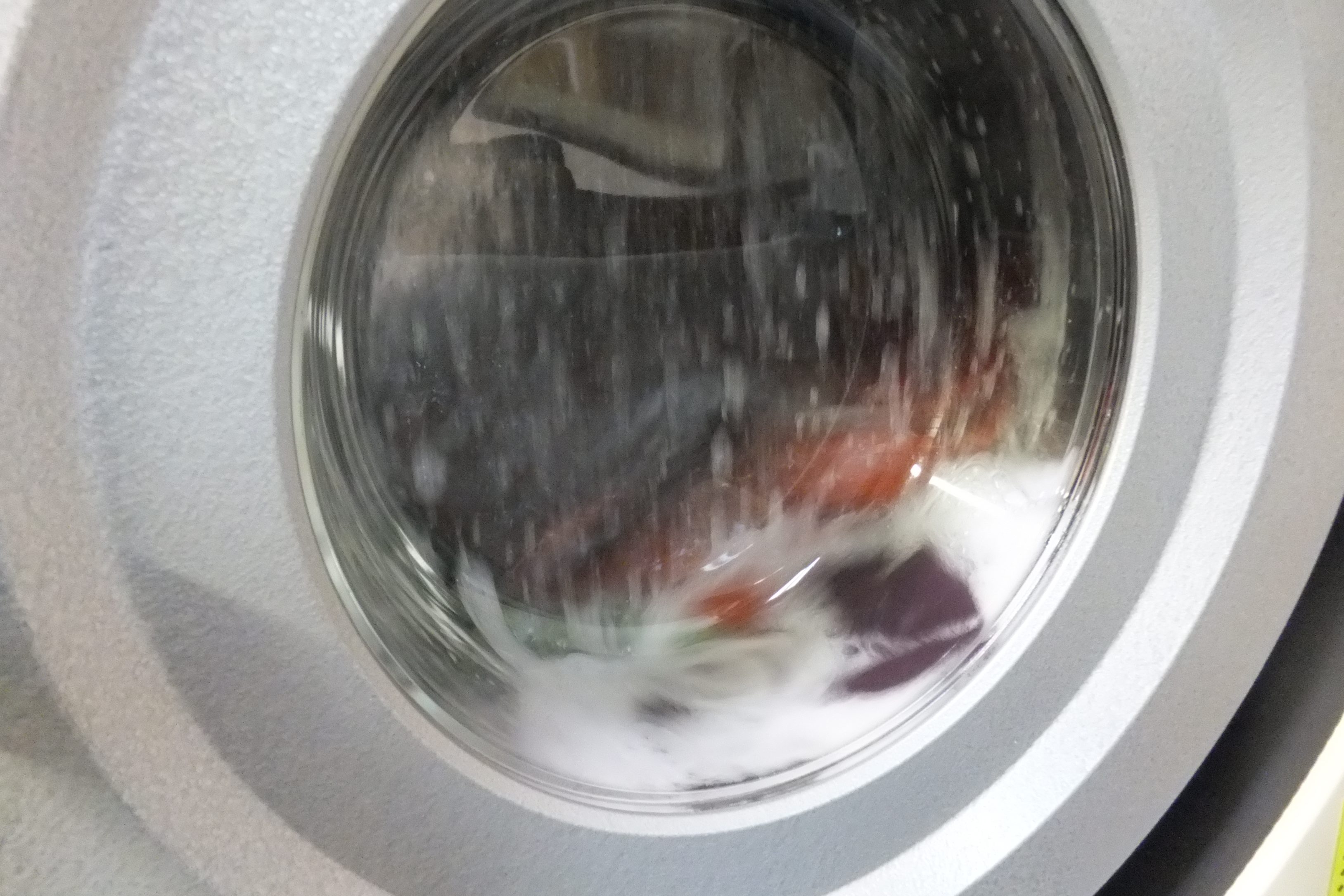丸洗いの是非
着物を洗う事にためらいがあられる方がおられます。(代表的なのは、帯。)一方、洗わないといけないと思っておられる方が、おられます。どちらも正解で、メリットとデメリットがあります。
・着物を洗わない方
洗う事で、着物生地の持つ独特の風合いや触り心地の変化、柄への傷、縮み、着物自体の型崩れ等々を心配される。短時間の着用だから、洗わない、大丈夫だと思っている。着物は、洗うものではないと、受け継いだ教えがある。等々。
対処方法:見える部分だけのしみ抜き加工になる。全体的な薄汚れが綺麗にならない。
・着物を洗う方
洗った後の清潔感、匂いや生地のきしみがなくなる変化、洗ったという安心感、洗う事の前後のきもののダメージの少なさの理解、見えない汚れも綺麗になる、等々。
加工後:洗う事で、金加工の一部がはがれたり、細かい金粉が薄くなったり、風合いの変化、多少の色落ちがあります。
極端な例かもしれませんが、
全体カビになった着物があります。さて、あなたならどうしますか?
昔、”洗い張り”と言う着物を解いて反物にし水洗いしてカビを綺麗に落として、その後自分で仕立て直す(縫い直し)技術が各々にあった時代と、それが普通に出来ない時代。
ドライ洗いと言う技術が発達しその責務に代わるものとなっている時代。
解いて洗って仕立て直す時代と、解かないでそのままの状態で洗える時代。
手間と時間を考えると、カビ落としの一つでも大きく変わっています。洗って着物の少しの風合いが変わるその微妙な感覚を理解できる方は、少ないと思います。
新品で半日しか着用してない着物を洗う事の抵抗感は、理解できます。しかし、次、いつ着るかわからない、半年後か、一年後か、5年後か10年後か、もしかしたら、着ないまま次の代に譲る事になるかもしれない、その着物を、一度着ただけだからと、洗わずにしまい込んでしまったら、それこそ次に着用されるときの状態はいかに?
一度着用されたら、きれいに見えても汚れている部分は、あります。(心配されるのは、衿と袖口の汚れ。)
新品で半日しか着用してない着物を、そのまましまい込む前に、部分洗いと言う、衿と袖口のゆすぎ出しを中心とした加工方法もあります。検討に値する方法だと思います。
いろいろとお手入れも方法がありますのでご相談下さい。
ここに述べたものは、一部の例とご理解下さい。
——————————————————————————————————————-
Pros and cons of washing completely
Some people are hesitant about washing their kimonos. (A typical example is an obi.) On the other hand, there are some people who think they have to wash their clothes. Both are correct and have advantages and disadvantages.
・Those who do not wash their kimono
When washing, there are concerns about changes in the unique texture and feel of the kimono fabric, damage to the pattern, shrinkage, and the kimono itself losing its shape. I don’t wash it because I only wear it for a short time, so I think it’s okay. There is an inherited teaching that kimonos are not meant to be washed. and so on.
How to deal with it: Only the visible parts will be removed. The overall light stains cannot be cleaned.
・The person who washes the kimono
The feeling of cleanliness after washing, the change in the smell and the squeak of the fabric, the sense of security that comes with washing, the understanding of how little damage is done to the kimono before and after washing, the fact that even invisible dirt becomes clean, etc.
After processing: Due to washing, some of the gold processing may peel off, the fine gold powder may become thinner, the texture may change, and the color may fade slightly.
This may be an extreme example, but
I have a kimono that is completely moldy. Well, what would you do?
In the past, there was a time when everyone had a technique called “Araihari”, in which they unraveled the kimono, made it into cloth, washed it with water to remove the mold, and then remade it themselves (resewing it), and a time when this was not normally possible.
Nowadays, the technology called dry washing has developed and has replaced that responsibility.
There are times when you can unravel, wash, and remake, and times when you can wash it without unraveling it.
When you consider the time and effort involved, even just removing mold makes a big difference. I don’t think there are many people who can understand the subtle sensation that the texture of a kimono changes slightly after washing.
I can understand the reluctance to wash a new kimono that has only been worn for half a day. However, you don’t know when you will wear the kimono next time, whether it will be in six months, a year, five years, or 10 years, or you may end up passing it on to the next generation without wearing it. If you just wear it and put it away without washing it, how will it be the next time you wear it?
Once worn, even if it looks clean, there may be some parts that are dirty. (The only thing to worry about is dirt on the collar and cuffs.)
Before putting away a brand new kimono that has only been worn for half a day,
A processing method called spot washing, which focuses on rinsing the collar and cuffs.
There is also. I think this is a method worth considering.
There are various ways to take care of it, so please contact us.
Please understand that what is described here is only a partial example.

